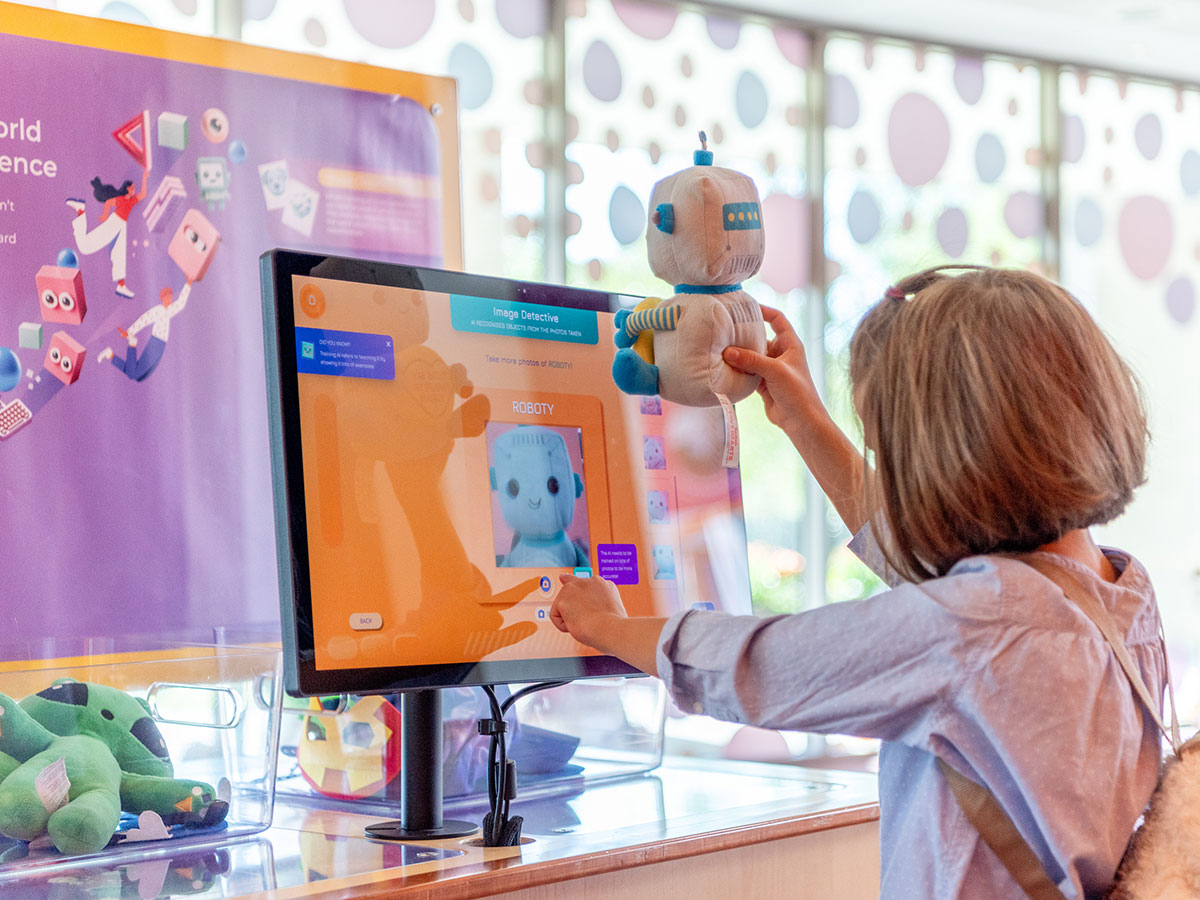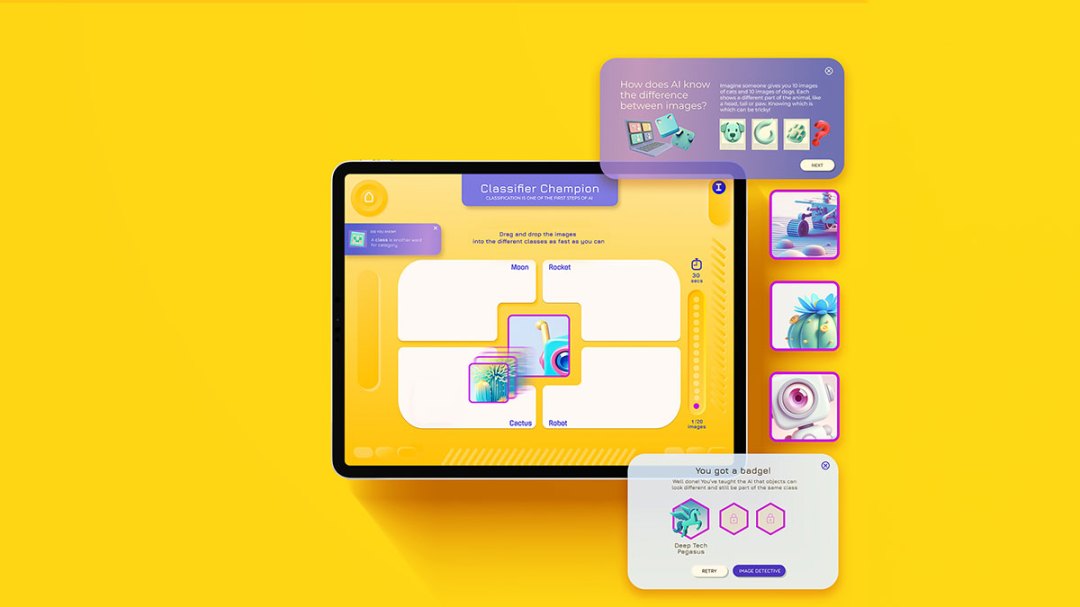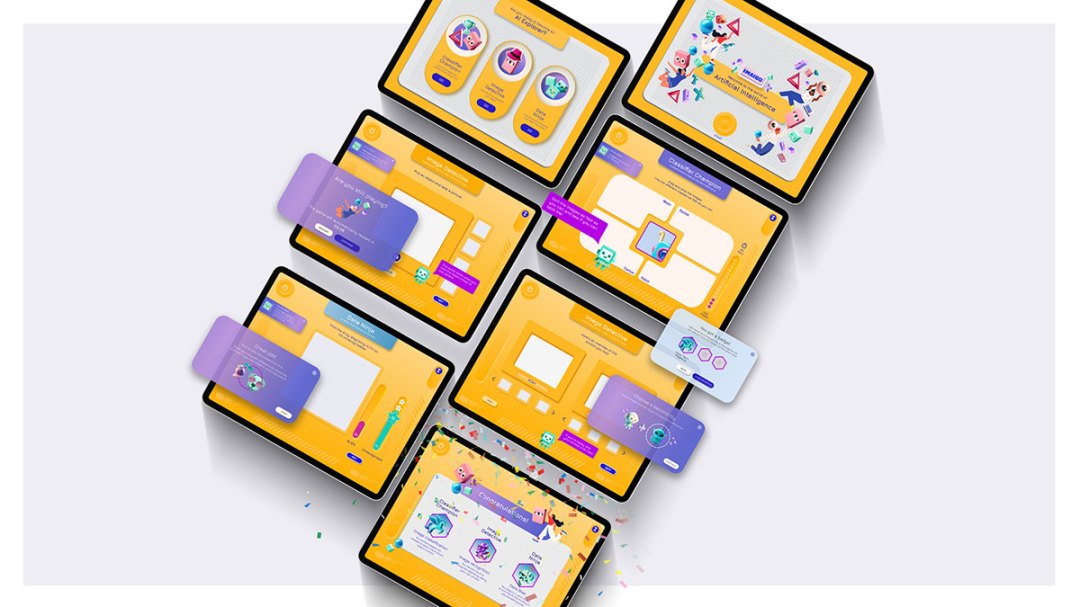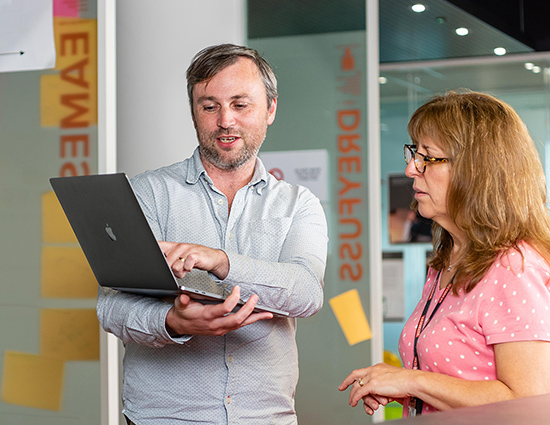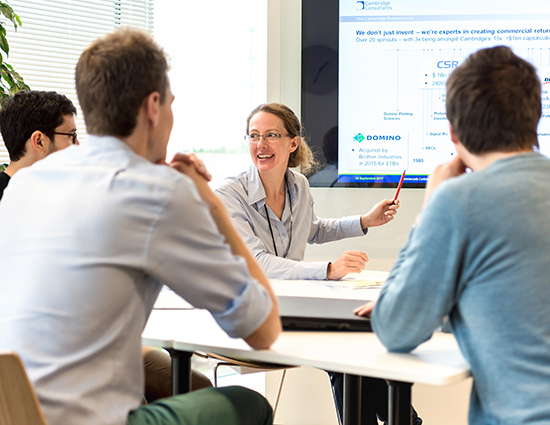Working at a deep tech AI consultancy like CC requires a playful, almost childlike enthusiasm for life. It takes curiosity, an open mind and an adventurous spirit to dream up products, services and systems that have never been seen before. More than that, it demands an uncynical attitude that refuses to wearily accept everything that’s gone before.
The point is that innovators can be just like kids sometimes – in a good way. So, imagine our delight when we landed the opportunity to create an interactive demo to bring artificial intelligence to life for children. As the creative ideas started to fly from the grown-ups at our project kick-off meeting, one thing struck us – who’s going to have the most fun here, the youngsters or us?
A few months on from inception, we think it’s fair to say we’re all proud of the results – and we’d like to give a shout out for our fellow project members: James Luong, Ella Vaughan, Joe Burrows, Matt Brown や Preet Lalli. As the pictures here reveal, the visual style of the demo exudes a sense of joy through colourful and user-friendly UI. We deployed a multimodal approach and defined the style around a set of witty characters, with combinations of familiarity and tech elements embedded in the carefully curated user experience. We also focused on adding gamification, such as encouraging children to earn badges, collect stars, and race against the clock to strike the perfect balance between fun and educational.
Bringing deep tech science and engineering to life
We are all indebted to our key playmates in this exercise – the brilliant team at the Cambridge Science Centre who brought us on board to help in their mission to break down the barriers to accessing STEM. Our colleague Ella Vaughan – one of CC’s representatives on the CSC executive council – is a proud advocate of its drive to inspire hard-to-reach children and young people who might not think that STEM is for them. That might be down to location, socio-economic background, and a host of other reasons.
The best way to learn is to have fun – but of course all of us realised the importance and seriousness inherent in the initiative. At CC, we are working hard to help our clients tread a steady path towards responsible AI, built on a robust framework of AI品質保証. It’s never too early to get to grips with vital issues of AI trust, safety, ethics and equity.
But back to our brief. The task was to create an experience that would inspire children aged 8 to 12 with the thrill of artificial intelligence – and also to teach them about how it all works. Our diverse team of designers, developers, AI engineers and project managers came together to tackle this unique challenge of developing an engaging and educational demo for children. More than that, it had to demystify AI and teach children the logic behind it.
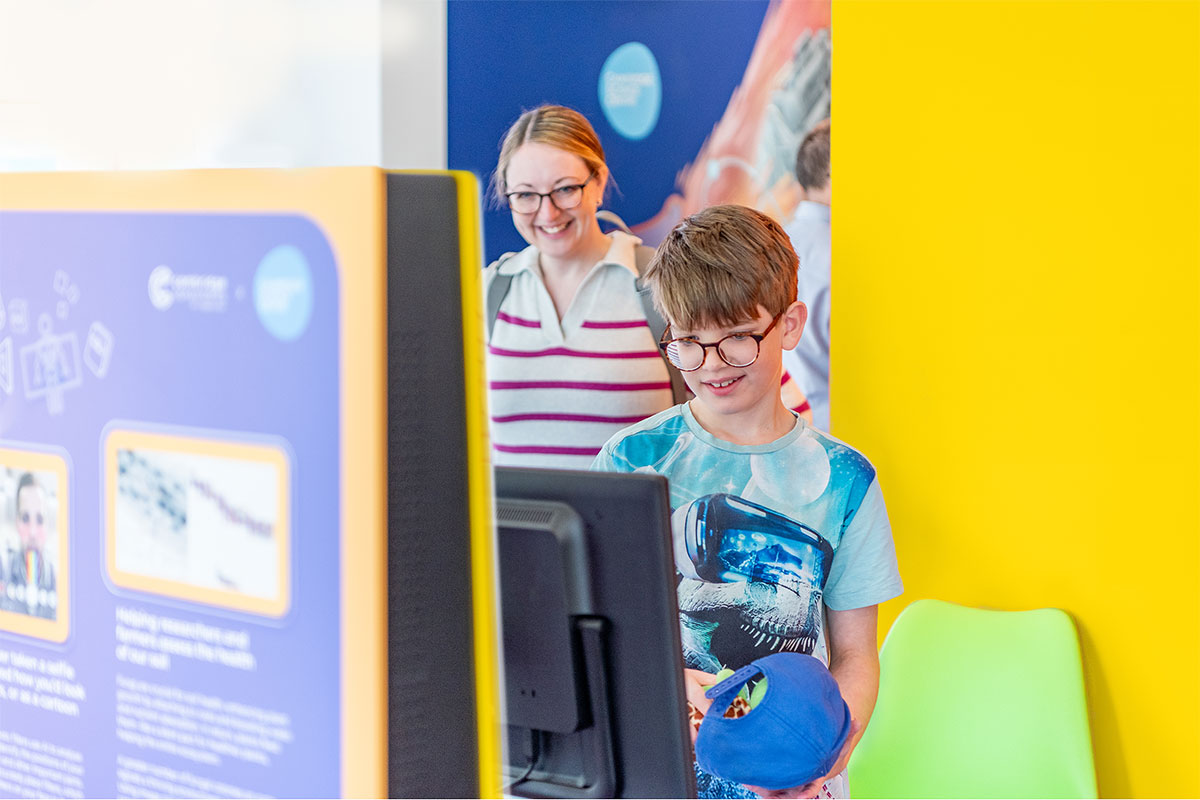
Engaging with STEM and AI topics
To create this tailored experience, we immersed ourselves in the environment of the Cambridge Science Centre, which prides itself on being the city’s first interactive science museum. Through observation, we identified which demos children were attracted to, which worked well, and which didn’t. Further discussions with facilitators provided valuable insights into their experiences and thoughts on how best to engage children with STEM topics, particularly AI.
With our initial research and findings, we launched an iterative design process. This involved developing user journeys, personas, storyboards and designs which we presented to the client for feedback. Each iteration was a step closer to a demo that would be exciting and informative.
User testing was a critical phase of our project. We developed a functional and visual prototype, which we tested with children to gather feedback on the demo, assess engagement levels and evaluate the UI. The insights gained from these sessions were invaluable and helped us refine the demo with children’s feedback in mind.
In parallel, there was a need to create a fresh visual language. We wanted to closely match CSC’s brand value and incorporated some key attributes to create a visual narrative that was educational and engaging. The project team introduced an immersive learning journey where visual style combining playful abstract icons and easy interaction complement the experience and bring the user in an adventure where learning about AI and tech is fun. In addition, many of the characters were partially AI generated, further demonstrating to the children some of the capabilities of this incredible technology.
Collaborative spirit
Maintaining close communication with CSC was essential throughout the project. We held regular meetings to present user testing results, share progress and incorporate feedback. This collaborative spirit extended to our work with the prototyping team, who helped us modify the existing physical stand used to present our demo, ensuring it was both functional and appealing.
The result of this collaborative journey is an interactive demo that meets its objective of bringing AI to life for kids. By breaking down complex concepts such as image classification, image recognition and data bias into engaging, multisensory activities, we show that AI is not magic but is grounded in logic and creativity.
“The AI exhibit is really engaging. We see all ages interacting with it, often together. Young children are learning through play and love it when they can fool the computer with a disguised alien toy. Meanwhile, older kids and adults are going deeper, following the technology and finding parallels in their lives (ePassport gates often being brought up as an example of image recognition!). The Cambridge Consultants exhibit is a fabulous and popular addition to our Gallery.”
The whole team is proud of what we have achieved with the Cambridge Science Centre and look forward to seeing how this demo will impact young minds and foster a deeper understanding and appreciation of AI. At Cambridge Consultants, we believe that through collaboration and innovation, we can create educational experiences that truly make a difference. And that’s worth coming to work for isn’t it?
